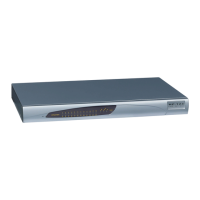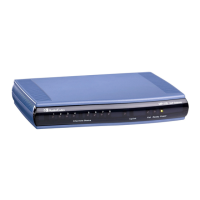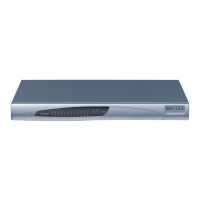Notes:
• For a detailed description of each IP Profile parameter, refer to its
corresponding "global" parameter (configured as an individual
parameter).
• IP Profiles can also be implemented when using a Proxy server (when
the AlwaysUseRouteTable parameter is set to 1).
• You can use IP Profiles in the IP Group table, Outbound IP Routing table,
and Inbound IP Routing table. The device selects the IP Profile as
follows:
1) If different IP Profiles (not default) are assigned to these tables, the
device uses the IP Profile with the highest preference level (as set in the
'Profile Preference' field). If they have the same preference level, the
device uses the IP Profile assigned to the IP Group table.
2) If different IP Profiles are assigned to these tables and one table is set
to the default IP Profile, the device uses the IP Profile that is not the
default.
• The 'Number of Calls Limit' parameter defines the maximum number of
concurrent calls allowed for the IP Profile. If the IP Profile is set to some
limit, the device maintains the number of concurrent calls (incoming and
outgoing) pertaining to the specific Profile. A value of "-1" means that
there is no limitation on calls (default). A value of "0" means that all calls
are rejected. When the number of concurrent calls is equal to the limit,
the device rejects any new incoming and outgoing calls pertaining to the
IP Profile.
• RxDTMFOption configures the received DTMF negotiation method: [-1]
not configured, use the global parameter; [0] don’t declare RFC 2833; [1]
declare RFC 2833 payload type is SDP.
• The 'Modems Transport Type' parameter configures the modem
transport type per IP Profile for the following parameters:
V21ModemTransportType, V22ModemTransportType,
V23ModemTransportType, V32ModemTransportType, and
V34ModemTransportType.
• You can also configure IP Profiles using the table ini file parameter,
IPProfile (see 'Configuration Parameters Reference' on page 461)
